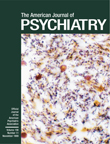Pramipexole Treatment for Cocaine Cravings
To the Editor:
Mr. A was a 34-year-old, single, successful businessman who was referred for evaluation of a possible bipolar disorder. He was currently depressed because he had in the previous year brought financial ruin on himself with cocaine freebasing and sexual and other extravagances that had cost him nearly $1 million.
Along with current major depression, persistent cocaine cravings but rare use, and a questionable past history of primary or secondary (to substance abuse) mania, he manifested an extraordinary movement disorder with constant restlessness and thrashing of the legs that left his inner knees and thighs bruised and discolored with hematomas in various stages of evolution and resolution. For the restless legs, he had consulted a neurologist who diagnosed preparkinsonism, which is presumed to be secondary to neurological damage from cocaine. The disfiguring movements limited his ability to return to and conduct business.
Previously, Mr. A had not responded to or tolerated most of the new generation of antidepressants. Treatment was begun with lamotrigine, up to 200 mg/day, and his mood improved modestly. Because of his severe restless legs and persistent depression, pramipexole treatment was begun, and the dose was titrated to 1.5 mg/day in divided doses.
Mr. A’s leg movements quieted substantially, his mood brightened, and he reported the first days in a year in which he awoke without craving cocaine, a benefit sustained for 1 year with pramipexole treatment, combined with 75 mg/day of lamotrigine. During the subsequent year, Mr. A. reported 1 day of noncompliance with his medication regimen when he was out of town overnight without his medication. That night, for the first time, he dreamt about cocaine, and the next day he experienced a renewed craving upon awakening, which disappeared when treatment was restored.
Although Mr. A faces an array of financial and business challenges, his mood is nearly euthymic, his leg movements at worst resemble mild restlessness, and his cocaine cravings are abolished.
We recognize the risks of attributing efficacy of a treatment on the basis of a single anecdote, but the possibility of treating cocaine cravings with this dopamine agonist on the basis of this observation is of potential importance, given the current lack of effective strategies.
Bromocriptine, a dopamine agonist with D2 selectivity, has been investigated as a treatment for cocaine withdrawal. Recent data do not, however, corroborate its efficacy for cocaine cravings (1). Pramipexole, a dopamine agonist with relative D3 receptor selectivity, and also D4 and D2 effects, may be a treatment option for patients with cocaine cravings, particularly those with comorbid refractory depression. Studies have shown that pramipexole decreases the self-administration of cocaine in rats (2).
On the basis of our single observation, we strongly urge that clinical studies follow up on this report.
1. Eiler K, Schaefer MR, Salstrom D, Lowery R: Double-blind comparison of bromocriptine and placebo in cocaine withdrawal. Am J Drug Alcohol Abuse 1995; 21:65–79Crossref, Medline, Google Scholar
2. Caine SB, Koob GF, Parsons LH, Everitt BJ, Schwartz JC, Sokoloff P: D3 receptor test in vitro predicts decreased cocaine self-stimulation in rats. Neuroreport 1997; 8:2373–2377Google Scholar



